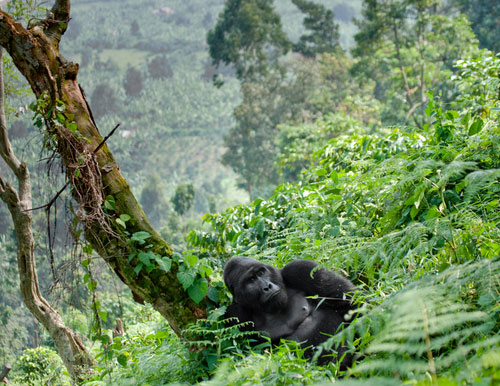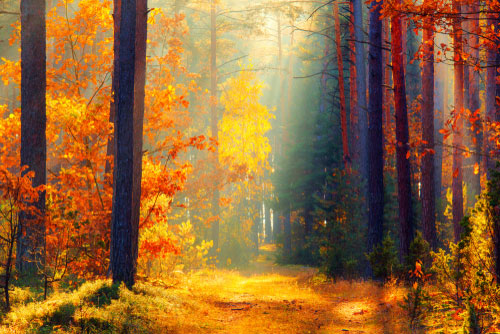People living in the countryside and others from yogic or tribal traditions people look at forests with respect, seeing them as ancient, sacred and mysterious. Others support themselves on the laws of science, recognizing forests as incredible biodiversity hotspots and the best “technology” we have to fight climate change. Yet, in the stressed and sometimes far way urban life it’s easy to forget about forests and how crucial they are for the balance of the Earth and for our long term survival. Let’s see what we can do to help.
Why Are Forests So Important?
They cover 30% of the planet’s land surface and they’re fundamental for the quality of the air we breathe, 20% of which comes from the Amazonian rainforest. Forests are also crucial for the quality of the rivers’ waters that cities directly or indirectly consume and for the regulation of the water cycle. They also play a key role in fighting climate change as they soak up and store CO2 into their biomass, preventing it from going to the atmosphere. In fact, protecting forests has the power to help us fulfill the Paris Agreement by 37%, the Scientific American says.
But there’s more. Way more. Forests help minimize the impacts of storms and floods by controlling soil erosion as tree roots make the soil stronger. 80% of the world’s biodiversity can be found in forests. And we should really thank this incredible biodiversity for enabling human developments in areas such as healthcare, pharmaceutics and, more recently, for inspiring the eco-design of products as we learn from nature’s best practices.
And have you ever imagined how life without forests would be? Not only for the over 1 billion people who live in or close to forests and need it to survive, but also for the ones living in cities and urban areas. We take and transform forests’ raw materials like wood and timber and use them on several commodities from toilet paper, napkins, corks or notebooks to heavier items like tables, chairs or simple wood for burning. And of course: avocados, açai, cacao, coffee, mangos, you name it – they all come from forests.
- Related:
Why Do Forests Need Our Protection And Help?

The equivalent to 1 football pitch of forest is lost every second. Annually, WWF estimates that around 8 million hectares of forest are lost, and as a result, 17% of the Amazonian forest has been lost over the last 50 years, together with other forestal areas in Indonesia or Congo. And it’s not only trees – plants, animals, and insect species are disappearing every day at an alarming speed, which can mean the loss of 10,000 – 100,000 species/year, putting the Earth’s balance at risk. Furthermore, the loss of forests also contributes between 12% and 17% to the annual global GHG emissions. But what is causing all this?
Indirectly, probably you or someone you know – representing the side of demand. Directly, the extractive, transformative and consumer goods companies – which represent the side of supply. The truth is that businesses have been expanding the dimension of farmlands and ranchlands, the latter spending huge amounts of water and responsible for the release of greenhouse gases (a topic for another discussion). Other commodities such as palm oil, corn or soy also take a lot of land space and are sometimes associated with deforestation (often done by trees that are illegally cut down or by causing fires), just like mine explorations and urbanization.
But it’s not just about vegetables, meat, earth minerals or buildings. It also about the energy we spend on cities. In one way, the sustainability of the biofuels coming from agricultural crops (of palm oil, sugarcane or corn) and used in fossil fuels remains a very controversial question. And the fact is that a lot of the energy consumed in developing countries (for cooking, heating or transportation) can be traced back to forests in the form of charcoal, wood, residuals, pellets, oils, sugar and starch crops and others.
What Can We Do To Help Protect The Forests?

What can you do to help protect the forests? You can act. You can stop buying or buy fewer types of harmful products and look for the ones certified as fairtrade or coming from responsibly managed forests. If many people contribute to a reduction in demand, it will have a significant effect on the suppliers’ side. You can also spread this issue among your friends, family, and community and ask them to do the same within theirs.
You can ask directly businesses to change and to follow a more sustainable path by making specific suggestions or just sharing your concerns. If many people do it organizations would understand you’re expecting something different from them and change would be facilitated. Ask political leaders for change as well and use wisely your vote and social networks. Try to have a positive impact on your organization or the organization you’re working with. Develop projects, ideas or communities in the countryside to help fight desertification and its implications. Inspire the change.
Learn more about agroforestry, the complexity of nature and its systems and how it is related to our own human complexity. Spend less time in digital gadgets and go spend more time nature (taking your loved ones with you) – it’ll make you feel good (ask the Japanese!) and more connected with forests.
Image credits to tree hug on Shutterstock, forests on Shutterstock and forest view on Shutterstock

